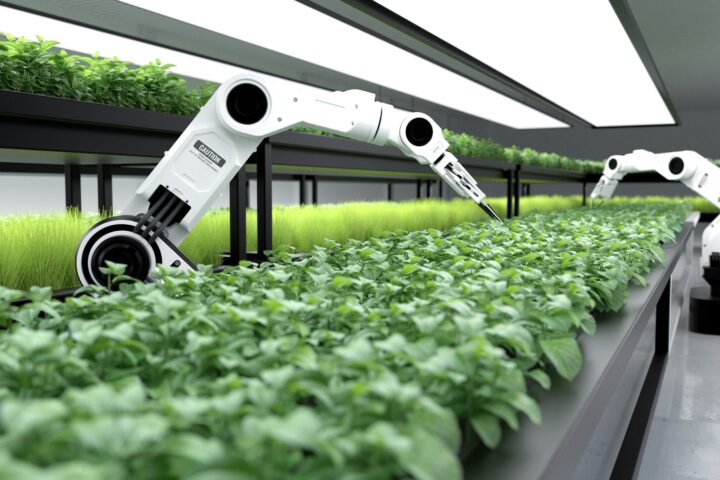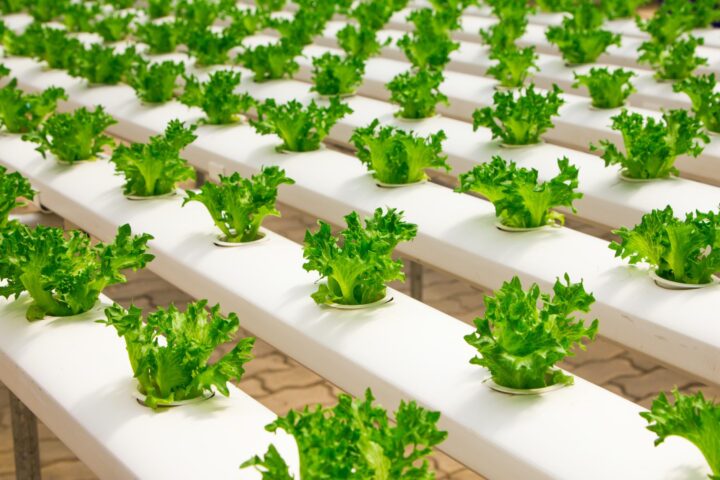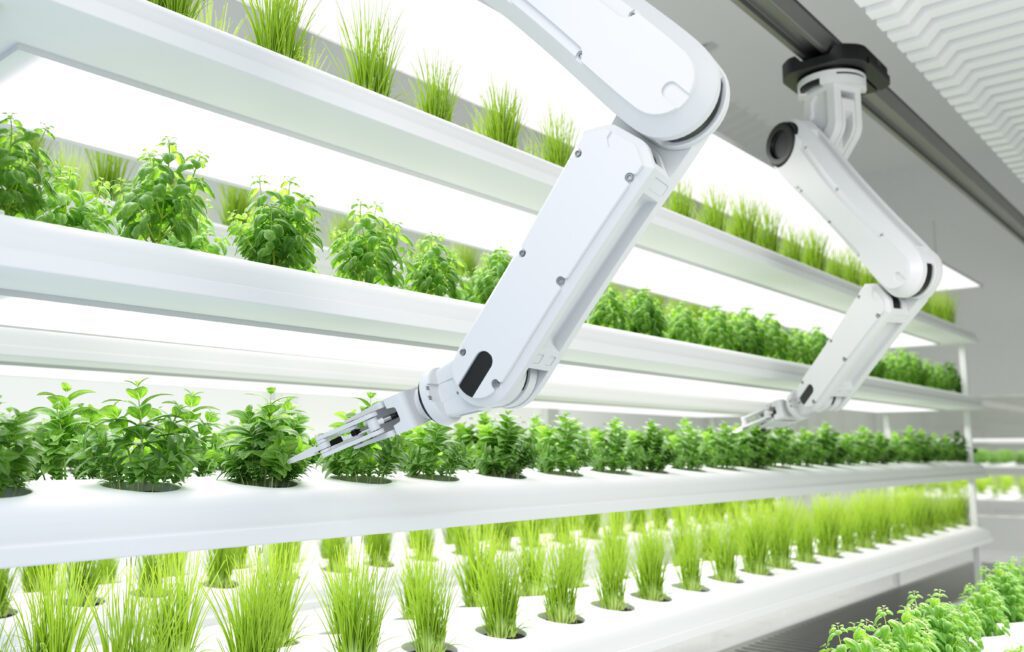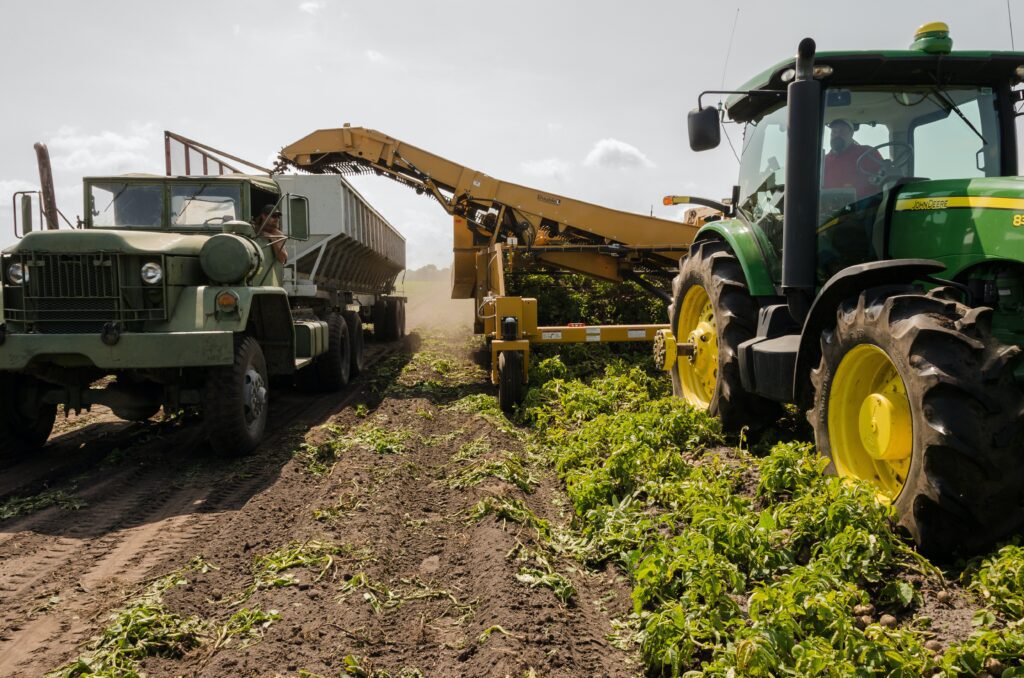The foundation of human civilization is agriculture, which provides billions of people with food, fiber, and a means of subsistence on a global scale. However, the agricultural industry faces a few difficulties, such as an expanding world population, climate change, a shortage of resources, and the need for sustainable practices. The incorporation of Artificial Intelligence (AI) has become increasingly crucial to address these issues, increase crop productivity, and reduce environmental impact. Utilizing cutting-edge technology to optimize numerous elements of agricultural operations, AI in agriculture provides a disruptive approach to contemporary farming. We will examine how AI functions in agriculture, the methods of application, its numerous advantages, the businesses setting the bar in this field, and the future of AI-driven agriculture in this in-depth investigation.
How AI Works in Agriculture
AI in agriculture refers to the application of various AI techniques and technologies to enhance farming processes, from planting and cultivation to harvesting and post-harvest management. Here’s how AI operates in this sector:
- Data Collection and Analysis: AI in agriculture begins with data collection from various sources such as satellite imagery, sensors, drones, and weather stations. These data sources provide real-time information on factors like soil quality, weather conditions, crop health, and pest presence. AI algorithms then analyze this data to generate valuable insights and recommendations.
- Machine Learning Algorithms: Machine learning algorithms process this data to recognize patterns and make predictions. For example, they can predict the optimal time for planting, irrigation needs, or the probability of a disease outbreak.
- Automation and Robotics: AI-driven automation and robotics play a crucial role in agriculture. Autonomous tractors, harvesters, and drones equipped with AI algorithms can perform tasks such as planting, weeding, and crop monitoring more efficiently than manual labor. These machines use computer vision to identify and act upon real-time data, ultimately reducing labor costs and increasing productivity.
- Decision Support Systems: Farmers receive actionable insights and recommendations from AI systems. These suggestions cover a wide range of topics, including crop selection, fertilizer application, and pest control.
- Monitoring and Control: AI systems continuously monitor the health of crops and livestock, detecting anomalies and alerting farmers to take timely action. This real-time monitoring helps in disease prevention and resource optimization.
- Crop Health Management: AI can identify diseases, nutrient deficiencies, and pest infestations early in the growth cycle. This enables farmers to apply targeted interventions, reducing the need for broad-spectrum pesticides and minimizing environmental harm.
- Predictive Analytics: AI models can predict crop yields, market trends, and potential challenges based on historical data and current conditions. This assists farmers in making informed decisions about planting and selling their produce.
- Precision Agriculture: Precision agriculture is a key area where AI excels. AI systems can create detailed maps of farms, highlighting variations in soil quality, moisture levels, and other essential parameters. This information enables farmers to apply resources such as water, fertilizers, and pesticides more precisely, reducing waste and environmental impact.

Implementing AI in Agriculture
Implementing AI in agriculture involves a step-by-step process, and there are various approaches and technologies to consider. Here’s a breakdown of the implementation process:
- Data Collection: Begin by collecting relevant data from the farm, including soil data, weather data, and crop data. This can be done using sensors, drones, satellites, and IoT devices.
- Data Integration: Integrate all the collected data into a centralized platform or system. This may require data preprocessing to ensure consistency and compatibility.
- Machine Learning Models: Develop machine learning models tailored to your specific agricultural needs. These models can include predictive algorithms for crop yield, disease detection, and pest control.
- Hardware and Automation: Invest in the necessary hardware, such as autonomous tractors, drones, and robotic harvesters, to implement AI-driven automation on the farm.
- Decision Support Systems: Implement AI-based decision support systems that provide real-time recommendations to farmers. These systems can be accessed through mobile apps or web platforms.
- Training and Education: Ensure that farm operators and workers are trained in using AI tools and technologies effectively. This includes understanding the data generated by AI systems and acting on the insights provided.
- Continuous Improvement: Regularly update and improve AI models based on new data and emerging technologies. AI in agriculture is an evolving field, and staying up to date is crucial for maximizing its benefits.

Benefits of AI in Agriculture
The integration of AI into agriculture offers a multitude of benefits, contributing to sustainable farming practices and increased crop yield:
- Enhanced Crop Yield: AI-driven insights enable farmers to optimize planting, irrigation, and fertilization, resulting in higher crop yields and improved food production.
- Resource Efficiency: AI helps reduce resource wastage by precisely delivering water, nutrients, and pesticides where and when they are needed. This minimizes the environmental impact and reduces operational costs.
- Sustainable Practices: AI encourages sustainable farming practices by reducing the use of chemicals, minimizing soil degradation, and promoting biodiversity conservation.
- Weather Forecasting: AI-driven weather forecasting provides farmers with accurate information, helping them prepare for adverse weather conditions and reduce crop losses.
- Pest and Disease Management: Early detection of pests and diseases through AI monitoring prevents infestations from spreading, reducing the need for chemical interventions.
- Data-Driven Decision-Making: Farmers can make informed decisions based on data-driven insights, leading to improved profitability and long-term sustainability.
- Labor Savings: Automation and robotics powered by AI can perform tasks that would otherwise require manual labor. This reduces labor costs and addresses labor shortages in the agricultural sector.
- Optimized Supply Chain: AI can improve supply chain management by predicting harvest times and crop yields. This helps in planning transportation, storage, and distribution more efficiently.
- Environmental Conservation: Precision agriculture, enabled by AI, minimizes the use of resources, and reduces the environmental impact of farming practices, aligning with sustainability goals.

Companies Leading the Way in AI Agriculture
Several companies have recognized the potential of AI in agriculture and have taken proactive steps to implement and promote its adoption:
- John Deere: The iconic tractor manufacturer has embraced AI and IoT technologies, offering products like the John Deere Operations Center, which provides farmers with real-time data analytics and automation solutions.
- IBM Watson Decision Platform for Agriculture: IBM’s AI-powered platform offers weather forecasting, disease modeling, and crop optimization to help farmers make data-driven decisions.
- Trimble: Trimble’s precision agriculture solutions use AI to optimize planting, harvesting, and irrigation, helping farmers increase efficiency and yield.
- Blue River Technology (A subsidiary of John Deere): Blue River Technology developed the See & Spray system, which uses computer vision and AI to target individual weeds with herbicide, reducing chemical usage.
- Granular (A subsidiary of Corteva Agriscience): Granular offers farm management software that utilizes AI to provide farmers with insights into profitability, field-level performance, and resource allocation.
- Climate Corporation (A subsidiary of Bayer): Climate Corporation provides digital agriculture tools that use AI and data analytics to help farmers manage risk, optimize planting, and maximize yield.

The Future of AI in Agriculture
The future of AI in agriculture holds immense promise and is expected to continue evolving in several key directions:
- Advanced Robotics: The development of more sophisticated agricultural robots will lead to increased automation on farms, from planting and weeding to harvesting and packing.
- AI-Powered Genomics: AI will play a pivotal role in crop breeding and genetic engineering, enabling the creation of more resilient and productive plant varieties.
- Blockchain Integration: The use of blockchain technology in agriculture, coupled with AI, will enable transparent and traceable supply chains, ensuring the authenticity and quality of agricultural products.
- Expanded Data Sources: AI in agriculture will benefit from an even wider range of data sources, including satellite imagery, aerial drones, and IoT devices, leading to more precise and actionable insights.
- Collaborative Farming: AI-driven platforms will facilitate collaborative farming efforts, allowing farmers to share data and insights to collectively improve agricultural practices.
- Global Adoption: As AI technology becomes more affordable and accessible, its adoption will spread globally, benefitting smallholder farmers in developing countries.
- Climate Resilience: AI will assist farmers in adapting to climate change by providing real-time recommendations for adjusting planting schedules and crop varieties.
- Regulatory Frameworks: Governments and regulatory bodies will need to establish guidelines and regulations to ensure the ethical and responsible use of AI in agriculture.
AI in agriculture is a game-changer since it provides a sustainable future for the world’s food supply system. AI enables farmers to improve their methods, cut down on waste, and boost agricultural yields through automation, data-driven insights, and predictive analytics. Leading businesses are already making substantial progress in this area, including Trimble, IBM, and John Deere, and further innovation and change are possible in the future. With the development of AI technology, it will become increasingly important to handle the problems of a growing population, climate change, and resource scarcity, ensuring that agriculture remains a crucial pillar of human civilization. The symbiotic relationship between AI and agriculture promises not only improved productivity but also a future for our planet that is more resilient to climate change.
